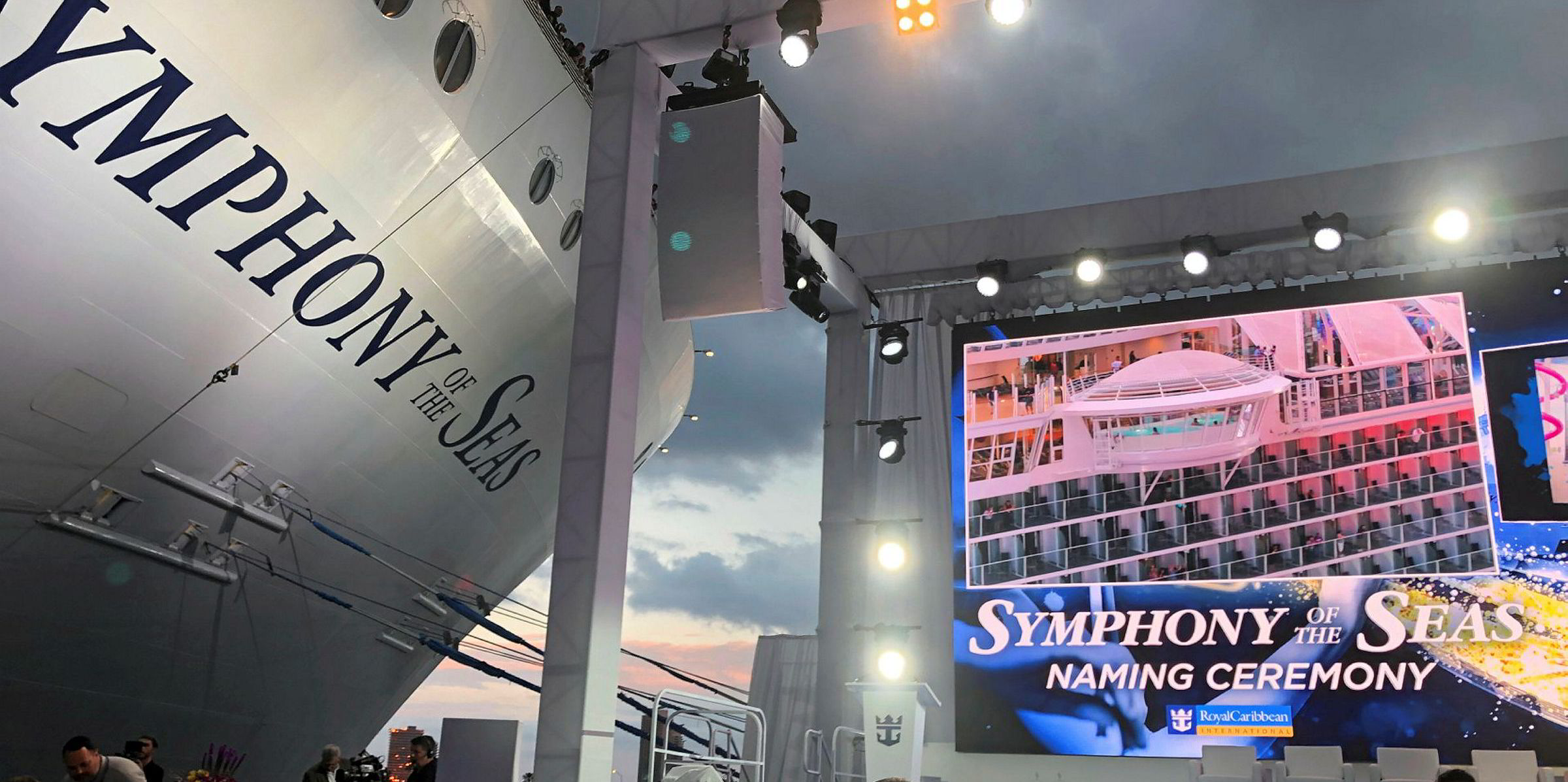I had the pleasure of sailing on the Symphony of the Seas, the world’s largest passengership, last month. It was a short three-day stint from Miami to the Bahamas and back, but long enough for this first-time cruisegoer to come away with one overriding impression: this Royal Caribbean Cruises ship is big. Very big.
At 362 metres long and 18 decks high, the 5,518-berth, 228,081-gt giant showed its size before I even boarded, dwarfing the company’s new Terminal A at Port Miami.
Stepping onboard, I walked onto a huge tendering area on Deck 2 that surrounded the medical centre — a miniature hospital of sorts, really.
However, its size truly sank in as I ascended 13 decks on one of the ship’s lifts to reach the makeshift press area in the kids-only Fuel Lounge.

From the glass-encased lift, I saw row upon row of stacked balconied staterooms surrounding a Central Park lined with shops, restaurants and 20,000 live plants.
I then made my way down four decks to my interior stateroom, which took me 10 minutes to find among endless corridors and turns.
I had been on the vessel for less than an hour when a second thought came to mind as I put down my luggage and sat on the edge of the bed to catch my breath: this ship is too big.
Don’t get me wrong, the Symphony of the Seas could pass for the Eighth Wonder of the World, with 22 restaurants, 42 bars, ice rink, three water slides, three theatres, a casino and 2,759 cabins.
But its sheer size made me ask myself more than once: Is bigger always better when it comes to cruiseships?
After all, I felt lost most of the time onboard a ship of this size, having almost no general sense of where I was at any given time. Getting from one area to another felt like a voyage in itself.
And in time, this ship will be outdone by an even larger Royal Caribbean vessel.
The Symphony of the Seas is the fourth ship in Royal Caribbean International’s Oasis class. The previous three had held the size record since the debut of the 225,282-dwt Oasis of the Seas in 2009.
The New York-listed cruise major plans to round out the class with an even bigger vessel in 2023, but its dimensions are yet to be determined.
While onboard the Symphony of the Seas, I interviewed Royal Caribbean Cruises chairman and chief executive Richard Fain and asked whether his company planned to keep building bigger and bigger ships. “Never say never...” he replied. “It’s entirely possible.”
I had been on the vessel for less than hour when a thought came to mind as I put down my luggage and sat on the edge of the bed to catch my breath: this ship is too big
In the late 1970s, Royal Caribbean Cruises was worried about going too big when the company was looking to break past the 1,000-passenger-capacity mark. However, those worries vanished when the expanded vessel proved a “huge success” with passengers, encouraging the company to build even bigger vessels.
However, not all cruise majors hold Fain’s view that bigger is better.
Carnival Corp chief executive Arnold Donald told TradeWinds this summer that there are no plans to build bigger than the 183,200-dwt AIDAnova, which was launched this month. “I don’t think your goal is to get as many people on one ship as you can,” he said.
And recent moves by some cruiseship owners — including Royal Caribbean and Carnival — show they are looking to invest in smaller vessels via the expedition cruise market.
In June, Royal Caribbean bought a two-thirds stake in luxury and expedition cruise player Silversea Cruises for $1bn. The following month, Carnival ordered two 264-passenger expedition vessels for its luxury brand Seabourn, for delivery in 2021 and 2022.
That’s probably because they now see more value in passengers like me, who think bigger is not always necessarily better.




